Today I’d like to share my notes from a recent bioeconomy event in London. Researchers from the University College London presented on their potential solution on wastewater treatment for small scale textile dyers in developing countries. The evening also covered the production of Pinãtex (I’ve written about that before; you can read that here).
Despite the doom and gloom and overwhelm that sometimes comes with thinking about the enormity of environmental problems (fashion or otherwise), the event felt ever so positive and hopeful. As well as people who work in biotechnology, it was great to speak to the enthusiastic design students from Royal College of Arts committed to making the world a better place. The event was held at Open Cell in Hammersmith. It’s an affordable space full of repurposed shipping containers used to nurture biotechnology start-ups in the early stages of business. How great that iteven exists?! And now to the project:
The wastewater problem
The Indus Project has developed a prototype solution for treating wastewater at a local level. You don’t need me to tell you about the level of water pollution anywhere that textiles are dyed. I remember a fashion lecturer telling me that its no accident that historically textile mills are located next to a water source. And if you saw Stacey Dooley’s Fashion’s Dirty Secrets TV programme (only clips are available now, e.g. here) you’ll have seen activists in Indonesia at work. As regulations are not enforced so well, they plug up effluent drain pipes from factories in secret, to avoid untreated water being flushed into the river. Then there are the occasional pictures in the press of colourful rivers that have turned pink or blue etc. due to textile dye runoff such as this one in the Philippines (photo from Greenpeace)
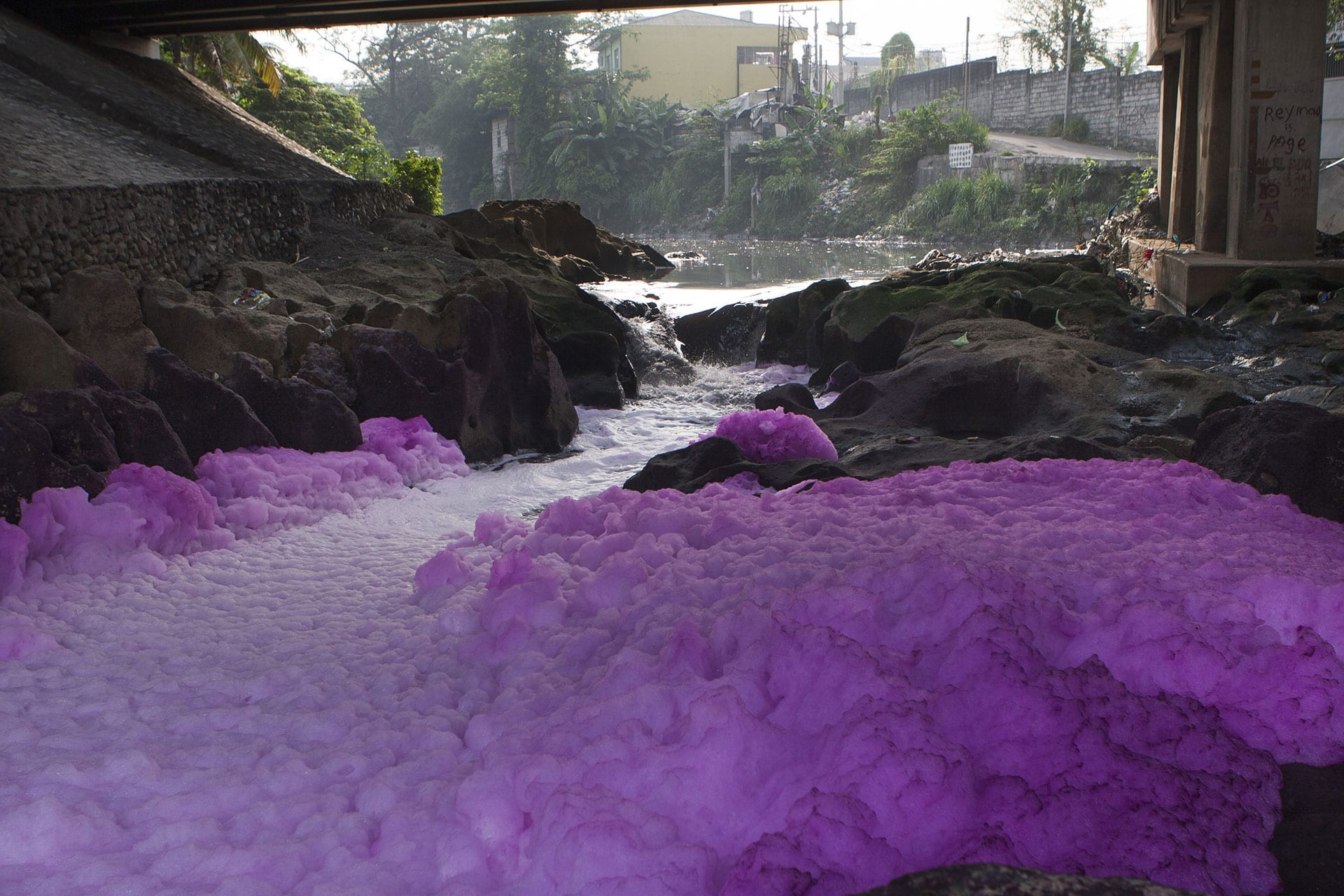
What about small scale production?
For small scale producers in various parts of the world (e.g. backyard businesses in small villages in India), the lack of water treatment infrastructure means there is no option but to throw untreated wastewater back into the nearest water source. Whilst this is bad news for the environment, people won’t be giving up their livelihood because of it.
One of the big problems with wastewater used for dyeing is the presence of heavy metals. Different colours of dye wastewater contain different concentrations of heavy metals. Cadmium is one example of a toxic heavy metal that is a human carcinogen, found in red and yellow colours.
Bioremediation as a solution: microalgae likes heavy metals
Bioremediation uses microorganisms to break down pollutants. In this case, different types of microalgae use different heavy metals as a food source, so it was a matter of connecting the wastewater and the microalgae.
The design the researchers came up with is a series of interlocking ceramic wall tiles. These contain ridges which can be coated with microalgae hydrogel, which binds heavy metals found in the effluent as wastewater is run through it. The idea is that the tile wall can be installed on the outside of a building and wastewater can be circulated multiple times through it until it is clean enough for disposal.
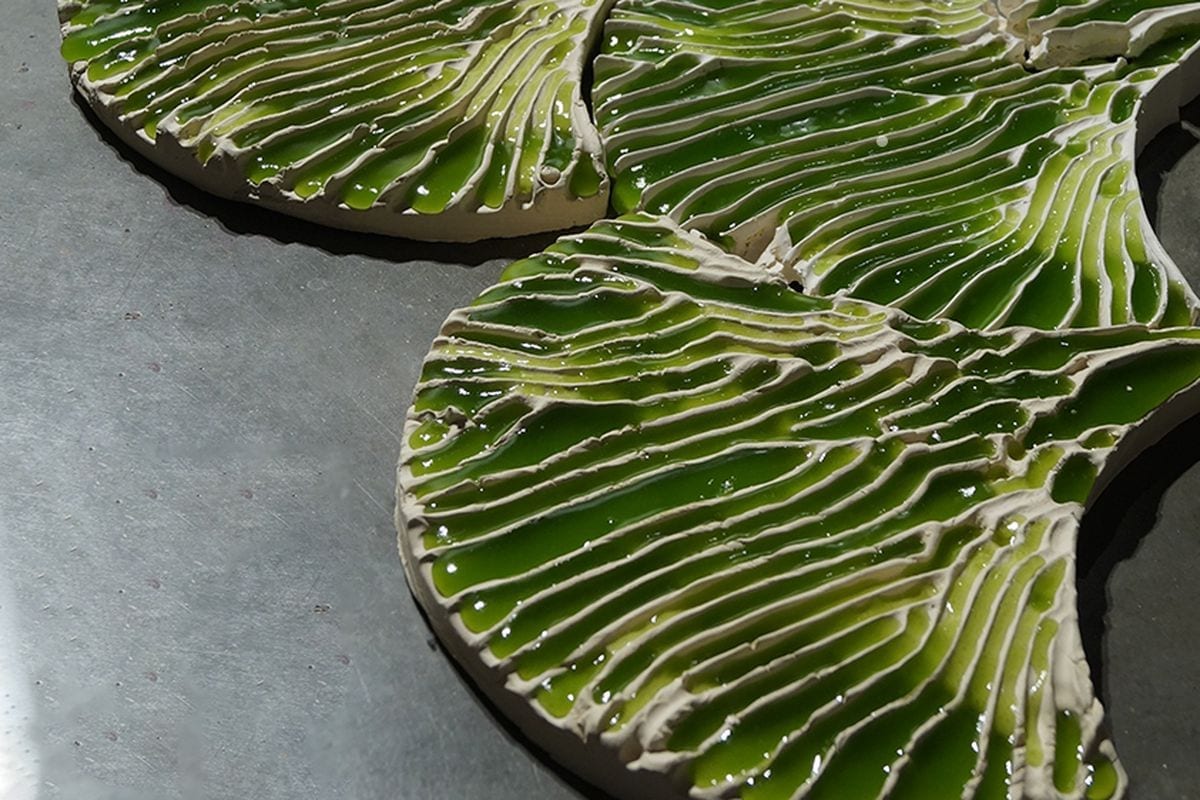
In coming up with the design, the researchers wanted to create a decentralised local solution simple enough for the producers themselves to implement it at low cost. This was very much a collaborative approach where researchers conducted site visits in India and worked with local NGOs. The system they came up with is pretty simple to make. Local businesses can construct the tiles from materials such as clay, stone, sand, and the only other thing needed is electricity to pump the water.
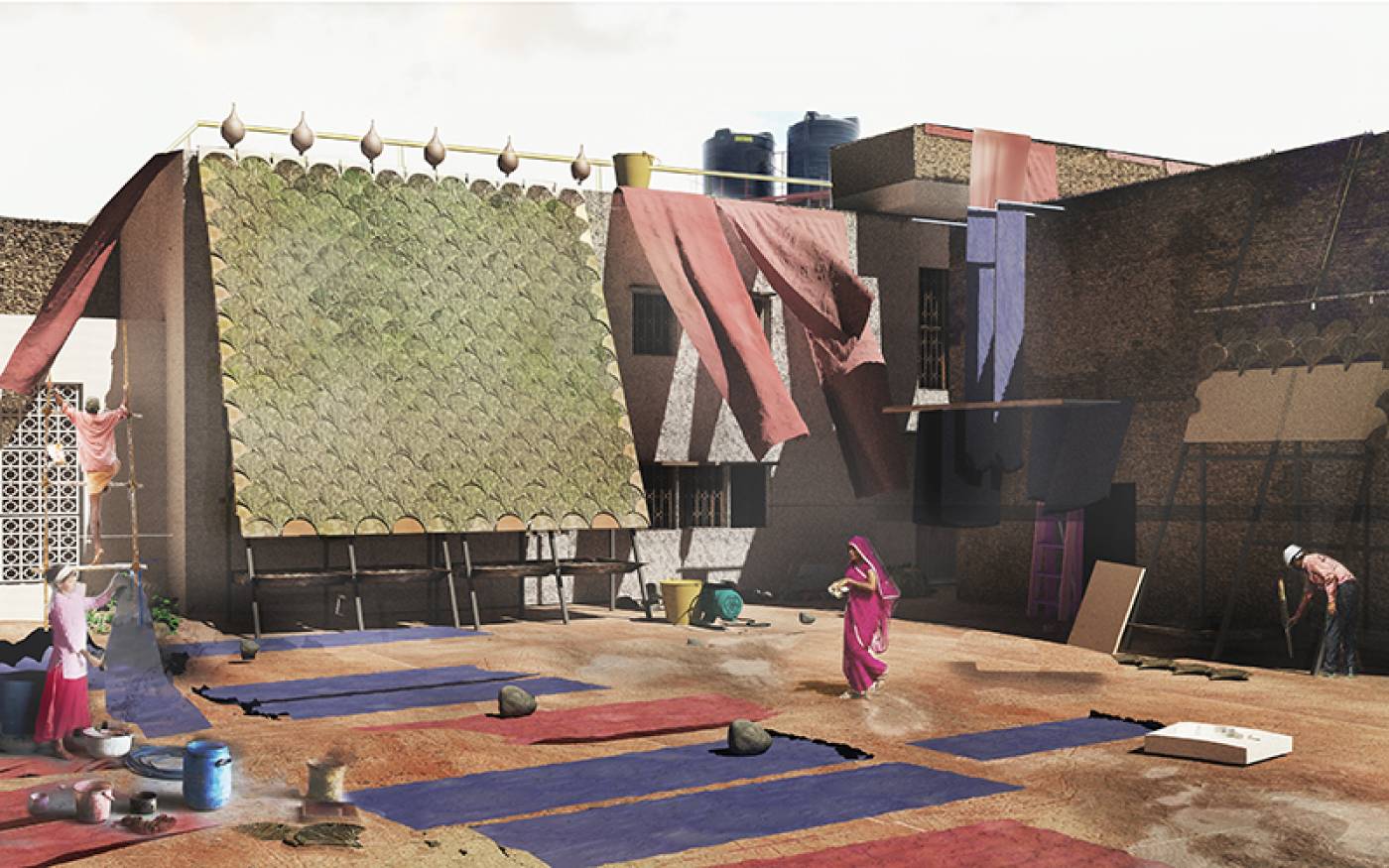
A render by the research project of what the tile wall could look like
Implementing the solution
The researchers mentioned that despite the amount of work done in the bioremediation area, getting the solutions off the ground are a common problem. My friend who works in biotechnology consulting affirmed this (you’ll hear from him soon on this blog talking about recycled polyester) and he tells me that this is true of all innovation. There are always lots of ideas and lots of research but very few solutions become commercially viable.
The Indus project is still in its early days. It looks promising from a lab perspective, with experiments showing that the uptake of cadmium can be brought down to safe levels within 30-45minutes of cycling the wastewater through the wall. However, the variables are far and wide once in a practical setting and there has been no pilot yet (it is subject to funding).
—
Whilst I know very little of biotechnology I thought this sounded like a really exciting project with potential. Particularly as it empowers people who don’t have a lot of technology or lots of funding available to them to address issues themselves. I think there will still be an issue of cost vs incentive… but to end on a good note, the positive news is that the project did win a design award recently (A/D/O Water Futures Design Challenge). Hopefully, that will give it some profile and impetus to take it forward!
PIN FOR LATER:
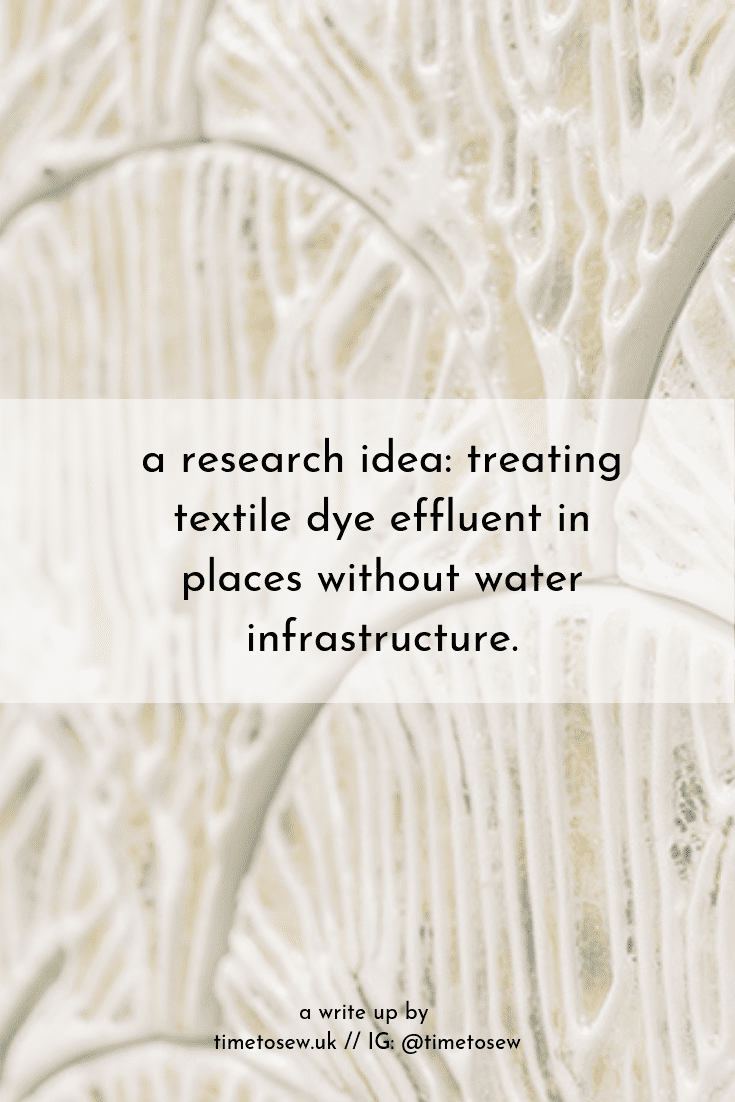

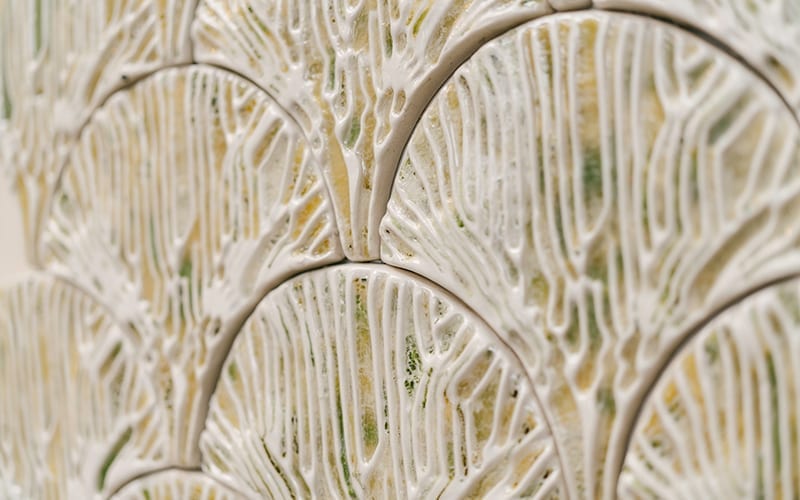
2 comments
Hi Kate, I love these kind of articles you write! It’s so fascinating what research and science can do, just a pity indeed that there’s often a gap between invention and large-scale application…
I don’t always comment but I read all of your articles (these with a scientific approach but also the ones where you tackle more psychological issues such as our consumption behavior) with great pleasure, and just wanted to say to keep up the good work 🙂
Charlotte
Hi Charlotte, thank you so much for the feedback and for commenting. Sometimes I think the blog maybe is a bit too random but I’m glad that you find it interesting! X